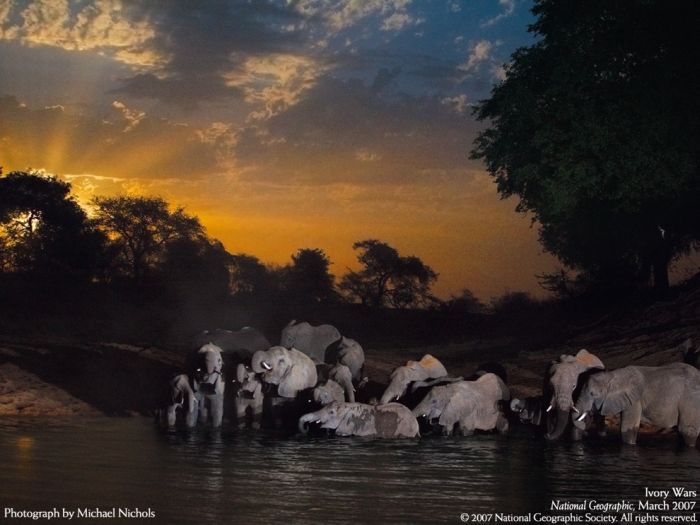|
|
Elephant
|
Threats
Hunting
The threat to the African elephant presented by the ivory trade is unique to the species. Larger, long-lived, slow-breeding animals, like the elephant, are more susceptible to overhunting than other animals. They cannot hide, and it takes many years for an elephant to grow and reproduce. An elephant needs an average of 140 kg (300 lb) of vegetation a day to survive. As large predators are hunted, the local small grazer populations (the elephant's food competitors) find themselves on the rise. The increased number of herbivores ravage the local trees, shrubs, and grasses. Elephants themselves have few natural predators besides man and, occasionally, lions. However, many African governments legally allow limited hunting. The large amount of money that is charged for the necessary permits is often used to support conservation efforts, and the small number of permits issued (usually for older animals) ensure that populations are not depleted.
At the turn of the 20th century, it is estimated that elephants numbered between 5 and 10 million, but hunting and habitat destruction had reduced their numbers to 400,000 to 500,000 by the end of the century. While elephant populations are increasing in parts of southern and eastern Africa, other African nations report a decrease of their elephant populations by as much as two-thirds, and populations in even some protected areas are in danger of being eliminated Chad has a decades-old history of poaching of elephants, which has caused the elephant population of the region, which exceeded 300,000 in 1970, to drop to approximately 10,000 today. In Virunga National Park, in eastern Democratic Republic of Congo, the number of elephants living in the observable area of the park fell from 2,889 in 1951 to 348 in 2006.
|
|









